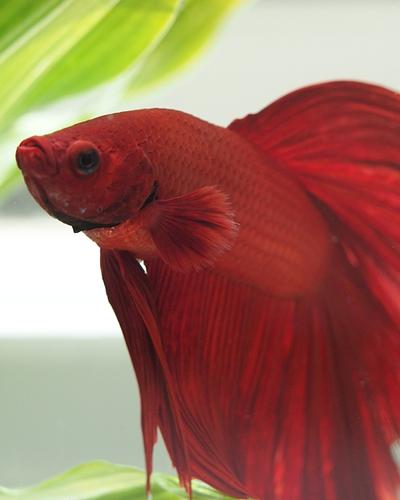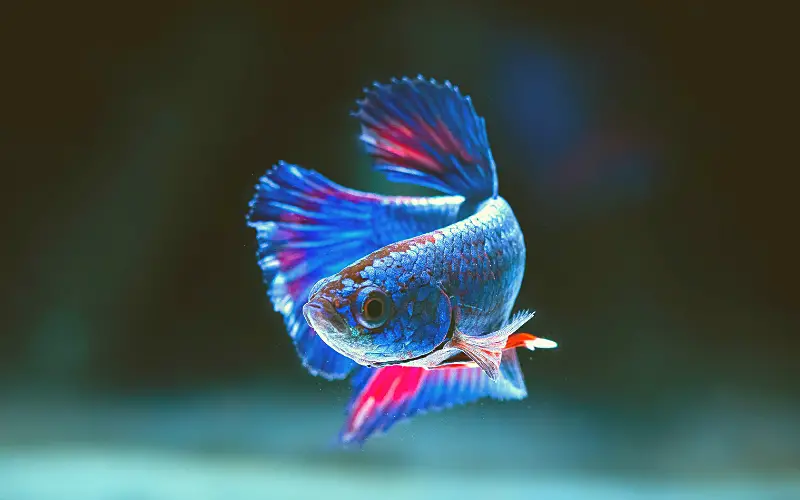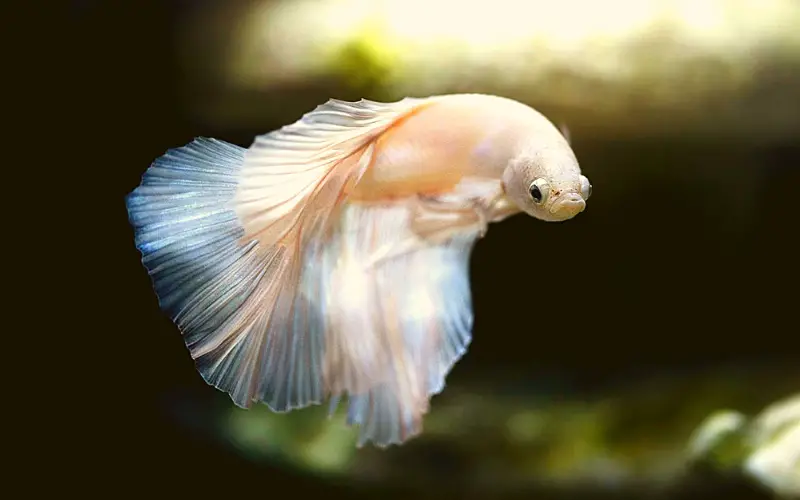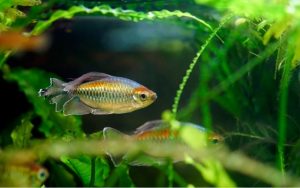How to cure betta fish columnaris? Betta fish, or Siamese fighter fish, are popular aquarium pets known for their vibrant colors and flowing fins. However, like all animals, bettas are susceptible to diseases and infections. One common ailment that betta fish can suffer from is columnaris, also known as cotton wool disease.
Columnaris in bettas is a bacterial infection that often presents as a white, cotton-like growth on the fish’s body, fins, or mouth.
This Disease can be hazardous for bettas, as it can spread quickly and lead to severe illness or even death if left untreated.

Betta columnaris is a severe concern for fish owners, as the condition can be challenging to treat once it reaches an advanced stage.
Recognizing the symptoms of columnaris in bettas and understanding how to prevent and treat the Disease is crucial for keeping these beloved fish healthy and happy.
In this article, we will explore the causes, symptoms, and treatment options for betta cotton wool disease, offering valuable information for Siamese Fighting fish owners looking to protect their pets from this harmful columnaris infection.
Table of Contents
ToggleWhat is columnaris Disease? (Cotton Wool disease)
Columnaris is a bacterial disease that affects freshwater fish. The bacterium Flavobacterium columnare causes it and can be highly contagious, often spreading rapidly throughout a fish population.
The Disease is characterized by white, fuzzy patches on the skin, gills, and mouth, as well as erosion and ulceration of the affected areas. Infected fish may also exhibit loss of appetite, lethargy, and labored breathing.
Columnaris is known to thrive in environments with poor water quality and stress, making it especially important for fish owners to maintain a clean and stable aquarium environment.
Treatment for betta fish cotton wool disease typically involves antibiotic medications and improving water quality, as well as removing any affected fish to prevent further spread of the infection.
Prevention is key in managing columnaris Disease, so regular water testing, proper tank maintenance, and stress reduction techniques are crucial for a disease-free healthy fish.
Is Columnaris Betta disease fatal?
Yes, Columnaris disease in Betta fish can be fatal, mainly if left untreated or diagnosed in its later stages. A highly contagious bacterial infection can progress quickly, causing significant tissue damage and organ failure.
Here’s a breakdown of the severity of Columnaris:
- Acute cases: These are the most aggressive and can lead to death within hours, especially in young fish. Symptoms progress rapidly, including eroded fins, skin ulcers, labored breathing, and lethargy.
- Chronic cases: While slower in progression, these can still be fatal if not treated. Symptoms typically present as frayed fins, white spots on the body, and loss of appetite.
The good news is that Columnaris is treatable with appropriate antibiotics and aquarium care. Early diagnosis and intervention are crucial for increasing the chances of successful treatment and recovery.
What causes columnaris in betta fish? (Causes of Columnaris)
Columnaris disease, caused by Flavobacterium columnare, can result in significant mortality in infected fish populations. Cotton mouth disease can present with various symptoms, including white or grayish lesions on the skin, frayed fins, and lethargy.

It is highly contagious and can spread rapidly through a fish population, especially in crowded or stressed environments. Columnaris disease is often more prevalent in warmer water temperatures, and fish already weakened by stress or poor water quality are particularly susceptible.
Treatment typically involves antibiotics and maintaining good water quality, but prevention through proper fish husbandry and hygiene practices is critical in controlling the spread of the Disease.
Symptoms of Columnaris in Betta Fish Tank: (identify columnaris)
It’s essential to identify the symptoms of columnaris early so that you can take steps to treat your Betta and prevent the spread of the Disease to other fish within the tank.
Here are some of the most common symptoms of columnaris in betta fish:
- White or grayish spots or patches on the head, fins, or gills: These lesions are the most common sign of columnaris. They may start small and round but quickly grow larger and more irregular.
- Lesions on the back that may extend down the sides: These lesions are often called “saddle sores” because they resemble a saddle.
- Moldy or cottony-looking lesions on the mouth: These lesions are a less common symptom of columnaris but can be very serious. If you see this symptom, it is a sign that the infection is advanced and your tropical fish is in critical condition.
- Frayed fins: If the infection affects the fins, they may appear frayed or ragged.
- Clamped fins: Clamped fins are a general sign of stress or illness in fish and can be a columnaris symptom.
- Loss of appetite: Sick fish often lose their appetite, so if your Betta is not eating, it could be a sign of columnaris.
- Lethargy: Lethargy is another general symptom of illness in fish. If your Betta is inactive as usual, it could signify columnaris.
If you see any of these symptoms in your betta fish, it is essential to take action immediately. Columnaris is a highly contagious disease, and it can be fatal if it is not treated quickly.
How To Treat Betta Fish Columnaris?
To treat Betta fish Columnaris, it is crucial first to isolate the infected fish in a separate tank to prevent the spread of the Disease to other fish. Then, the water in the tank should be treated with antibiotics specifically designed to combat Columnaris.
It is essential to follow the medication’s closely-medication instructions and continue the treatment for the entire duration as recommended, even if the fish appears to be getting better.
Additionally, the water in the small betta tank should be tested regularly for ammonia, nitrite, and nitrate levels and kept clean with regular water changes. Increasing the water temperature to around 80-82°F can also help slow down the reproduction of the columnaris bacteria causing the infection.
Providing the fish with a low-stress environment, such as reducing sudden changes in water conditions and maintaining good water quality, can also aid recovery.
It is essential to closely monitor the fish throughout treatment and seek veterinary advice if the infection does not improve.
Betta fish columnaris treatment at home
Treating columnaris in your betta fish at home requires prompt action and a two-pronged approach: improving water quality and administering medication. Here’s a step-by-step guide:
1. Isolate the betta:
- Move your Betta to a quarantine tank with clean, conditioned water. This prevents the infection from spreading to other fish.
2. Improve water quality:
- Perform a 50% water change immediately and siphon the gravel to remove organic waste that can harbor bacteria.
- Maintain optimal water parameters: temperature around 78°F (25°C), pH between 6.8 and 7.5, ammonia and nitrite at 0 ppm, and nitrate below 20 ppm.
3. Medication:
- Nitrofurazone and Kanamycin: This combination is considered the most effective treatment for columnaris. You can find medications containing both ingredients at pet stores or online. Follow the dosage instructions carefully.
- Salt baths: Aquarium salt can be used as an adjunct therapy. Add 1-3 teaspoons of aquarium salt per gallon of water in the quarantine tank. Don’t use salt if your Betta has pre-existing gill issues.
- Other medications: Depending on the severity of the infection, your veterinarian may recommend other medicines like Maracyn or Furan-2.
4. Supportive care:
- Maintain proper water temperature and aeration in the quarantine tank.
- Offer your Betta high-quality, easily digestible fish foods to encourage them to eat.
- Monitor your Betta closely for any improvement or worsening of symptoms.
Here are some additional tips for preventing columnaris:
- Quarantine new fish for at least two weeks before adding them to your main tank.
- Maintain good water quality through regular water changes and gravel cleaning.
- Avoid overcrowding betta fish in your tank.
- Minimize stress factors like tank mates that can bully your Betta.
- Feed your Betta a healthy diet.
You can help your Betta recover from columnaris with prompt action and proper care. Remember, early diagnosis and treatment are crucial for a successful outcome.
How To Prevent Columnaris In Betta Fish aquarium?
To prevent columnaris in Betta fish, it is vital to maintain a clean and healthy environment in the aquarium. This can be achieved by regularly cleaning and maintaining the water quality and providing proper filtration and aeration.
It is also essential to avoid overfeeding the fish and to remove any uneaten food from the tank to prevent the build-up of organic matter that can promote bacterial growth.

Additionally, it is crucial to quarantine any new fish before adding them to the main aquarium to prevent the spread of betta fish diseases columnaris. Keeping stress levels low by providing adequate hiding spots, maintaining proper water temperature, and avoiding overcrowding in the tank can also help prevent betta fish from suffering.
It is essential to regularly monitor the behavior and appearance of the Betta fish and seek veterinary care if any signs of illness are observed. By taking these preventive measures, Betta fish owners can help ensure the health and well-being of their fish.
Preventing Your Betta Fish From Feeling Funky
Saddleback disease” is a common term for Columnaris, a bacterial infection that can affect betta fish and other aquarium inhabitants.
It’s crucial to understand that preventing Columnaris goes beyond just preventing the “saddleback” appearance on the fish’s back. The bacteria responsible can attack anywhere on the body, including fins, mouth, and gills.
Here are some key ways to prevent Columnaris in your betta fish:
Maintain optimal water quality:
- Perform regular water changes (25-50% weekly) to remove harmful build-up.
- Ensure consistent water temperature (78-82°F) suitable for bettas.
- Use a reliable filter appropriate for your tank size and perform regular maintenance.
- Monitor water parameters like ammonia, nitrite, and nitrate, keeping them within safe levels.
Minimize stress:
- Provide your Betta with an appropriately sized tank (minimum 5 gallons), hiding places, and enrichment.
- Avoid overcrowding the tank with other aquarium fish that might bully your Betta.
- Quarantine new fish for at least two weeks before introducing them to the main tank.
- Minimize noise and disturbances around the tank.
Promote a healthy immune system:
- Feed your Betta a varied diet of pellets, flakes, and occasional frozen or live food.
- Maintain a stable tank environment with consistent water parameters and temperature.
- Avoid overfeeding, as excess food can contribute to poor water quality and stress.
Additional tips:
- Use aquarium salt at a concentration of 1-2 teaspoons per gallon as a prophylactic measure.
- Consider adding plants like Indian almond leaves to the tank, which have antibacterial properties.
- Regularly inspect your Betta for any signs of illness, including white or grayish lesions, frayed fins, lethargy, or loss of appetite.
Early detection and treatment:
If you suspect your Betta has Columnaris, prompt action is crucial. Isolate the fish in a quarantine tank and seek advice from a veterinarian or experienced aquarist for specific treatment recommendations. Antibiotics like Maracyn II or Kanaplex and continued water quality maintenance are often used.
Commonly Asked Questions about how to treat columnaris in bettas (columnaris betta FAQ)
How do I know if my fish has columnaris?
Look for white patches, ragged fins, and “saddle sores” on the back. Check gills for erosion and excess mucus. These could be signs of columnaris, but consult a vet for confirmation.
How to treat cotton wool disease in your bettas?
Isolate your Betta, perform frequent water changes, and use aquarium salt or medications like methylene blue to combat the bacteria. Seek vet advice for severe cases.
Can fish survive columnaris?
Fish survival with columnaris hinges on strain speed, early detection, and swift treatment. Fast-acting strains may be fatal within hours, but slower ones offer recovery chances with quick action and vet guidance.
How do I get rid of columnaris in my aquarium?
To eliminate columnaris in your aquarium, promptly quarantine infected fish, treat them with antibiotics like erythromycin, and maintain optimal water conditions. Increase temperature to 86°F (30°C) to expedite recovery.
What are the clinical signs of columnaris in bettas?
Clinical signs of flexibacter columnaris in bettas include white, cotton-like wounds on the skin, frayed fins, lethargy, and difficulty breathing. Immediate isolation and treatment with antibiotics like erythromycin are crucial for recovery.
How long does columnaris take to kill?
If left untreated, Columnaris can kill your fish in three days. Columnaris may progress rapidly, causing death within a few days if untreated. Prompt identification and intervention with appropriate antibiotics are crucial for increasing the chances of the Betta fish’s survival.
Is betta fish columnaris treatable?
Yes, betta fish columnaris is treatable. Immediate isolation, proper diagnosis, and timely treatment with antibiotics like erythromycin can significantly improve the chances of recovery.
Can salt cure betta columnaris?
Salt alone is not a reliable treatment for betta columnaris. Antibiotics such as erythromycin are more effective. Consult a vet for proper diagnosis and treatment guidance.
Conclusion
In conclusion, caring for betta fish requires knowledge, patience, and dedication. These stunning creatures bring beauty and tranquility to our lives but are also prone to diseases like columnaris. By providing them with proper nutrition, a well-maintained tank, and regular monitoring, we can minimize the risk of infections and promote their overall health. Prevention is vital, so always be observant and proactive in maintaining a clean and stress-free environment for your betta fish. Doing so ensures that your betta fish thrives happily and avoids the dreaded betta fish columnaris.
You might also like
- Pineconing Betta Fish Diseases (5 Symptoms & Best Treatment)
- Effective Popeye Betta Treatments: (Tips and Tricks)
- 7 Reasons Betta Fish Flaring Its Gills & (How to Handle It!)
- Better Betta Fish Rescue: Giving Hope to Neglected Fish!
- Betta Velvet Disease 101: Symptoms, Treatment & Prevention
- Betta Swim Bladder Disorder: (7 Symptoms & Best Treatment)
- Betta Tumor 101: Symptoms, Causes & Proven Treatment!





